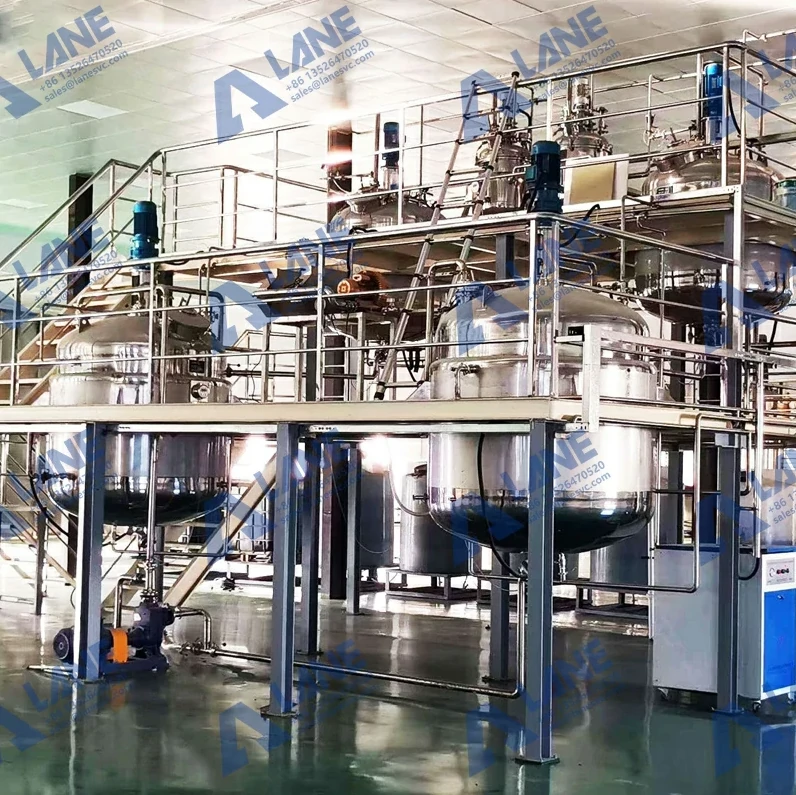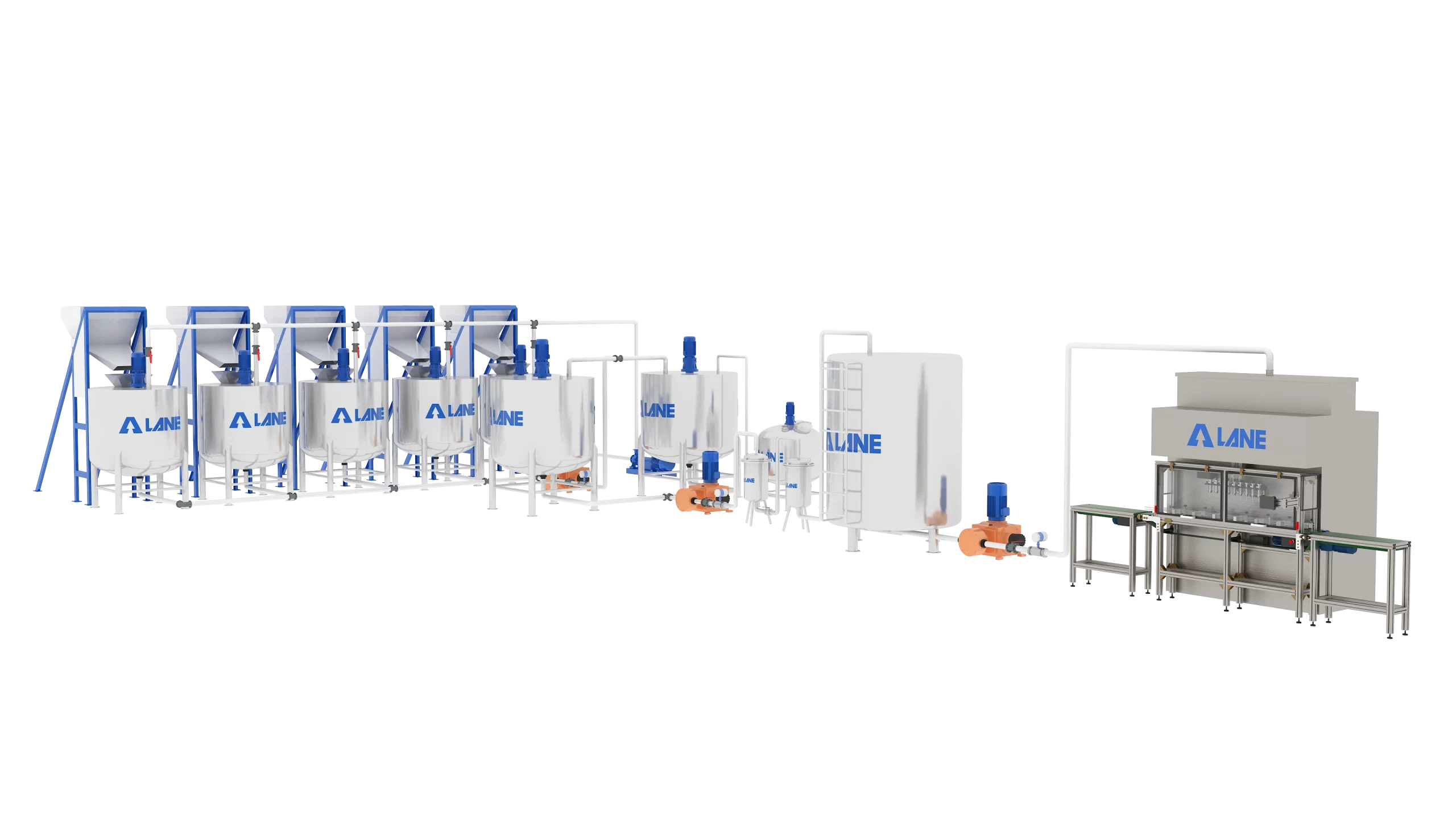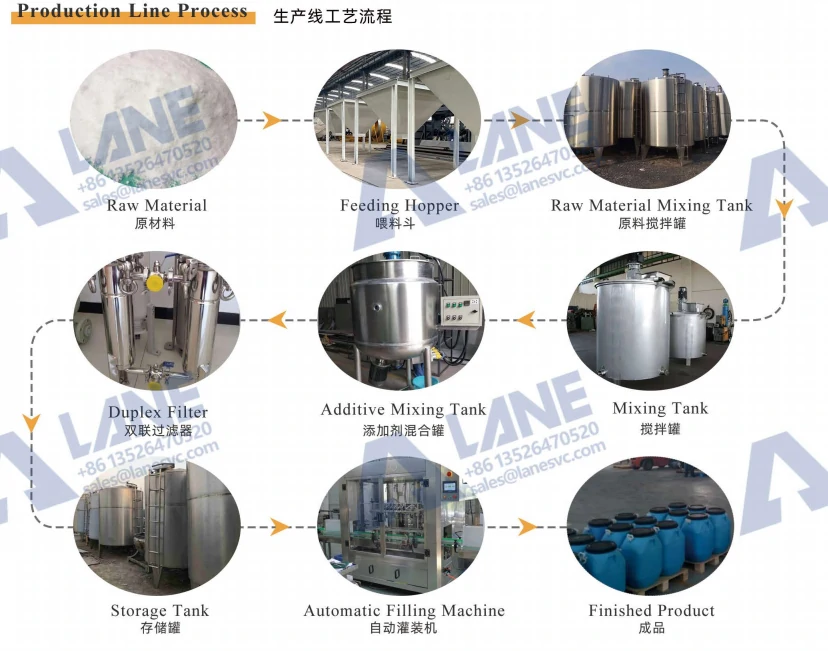
Automated Liquid Fertilizer Production Line: Driving the Future of Smart Agriculture
The global demand for sustainable agricultural solutions has accelerated the development of advanced liquid fertilizer production line. Among them, the automated liquid fertilizer production line is gradually being recognized as one of the most efficient and flexible technologies in modern agriculture. Unlike traditional manual or semi-automatic devices, this system relies on digital control, precise measurement, and continuous operation to provide stable and high-quality liquid fertilizers.
The uniqueness of the automated liquid fertilizer production line lies not only in its ability to produce customized formulas, but also in its seamless integration with precision agricultural practices such as water-fertilizer integration and hydroponics. In an era where farmers are under pressure to reduce costs, conserve resources, and minimize environmental impact, the automation of fertilizer production is no longer a luxury but a necessity.

At its core, the automated liquid fertilizer production line is designed to transform simple raw materials into ready-to-use liquid fertilizers that meet strict quality standards. The process involves several well-coordinated steps, each supported by specialized equipment and digital control systems.
Raw Material Handling: Soluble chemicals such as urea, potassium chloride, and phosphates are weighed and prepared. Automation ensures exact dosing and prevents errors.
Mixing and Dissolution: Raw materials are transferred to mixing tanks where agitators or jet mixers dissolve them in water. Automated temperature and pH controls maintain stable reactions.
Additive Incorporation: Micronutrients like zinc, manganese, and boron are added through dosing pumps connected to additive mixing tanks.
Homogenization: The entire solution passes through high-speed mixers that guarantee uniform distribution of nutrients.
Filtration and Quality Control: Fine dual filters eliminate insoluble particles, while sensors monitor density, clarity, and nutrient concentration in real time.
Storage and Packaging: Automated filling machines package the final product into bottles, drums, or IBC tanks, depending on market demand.
Each of these steps is interconnected by conveyor systems, pipelines, and PLC (Programmable Logic Controller) units that oversee the entire operation. The result is a streamlined production cycle that runs with minimal human intervention while maintaining high accuracy.

The transition from manual to automated liquid fertilizer production line in agriculture mirrors changes in other industries, such as food processing or pharmaceuticals. For fertilizers, automation brings several critical advantages:
Consistency and Accuracy: Manual production often suffers from variations in nutrient content due to measurement errors. Automation ensures each batch of liquid fertilizer is identical in quality.
Labor Efficiency: With an automated liquid fertilizer production line, a small team can manage operations that would otherwise require dozens of workers.
Scalability: Automated systems are modular and can be expanded as demand grows, making them suitable for both regional cooperatives and multinational producers.
Sustainability: Accurate dosing and efficient use of water reduce waste, while closed-loop systems minimize emissions and contamination.
Traceability: Digital systems store production data, making it easier to track batches, comply with regulations, and reassure customers about product safety.
Modern systems integrate advanced engineering and digital technologies:
PLC and SCADA Systems: Centralized control allows operators to adjust parameters, monitor processes, and respond quickly to deviations.
Automatic Dosing Pumps: Precisely deliver raw materials and additives, improving formulation accuracy.
Real-Time Sensors: Track parameters like pH, temperature, viscosity, and nutrient concentration.
Data Management: Historical production data helps optimize formulations and energy use.
Modular Design: Equipment such as raw material tanks, mixing tanks, additive tanks, filtration systems, and packaging machines can be configured for specific needs.
These technologies work together to create an intelligent production environment that adapts to the requirements of modern agriculture.
In Argentina, a fertilizer producer supplying soybean and maize growers implemented a fully automated liquid fertilizer production line. Before automation, production relied on manual mixing and filling, which limited daily output and created inconsistencies.
After upgrading, the plant installed PLC-controlled mixing tanks, automated dosing systems, and high-capacity packaging units. Daily output increased by 70%, labor costs were reduced by half, and product quality stabilized. Farmers reported improved yields due to the reliability of the fertilizer blends, and the company successfully expanded exports to neighboring countries.
In the Netherlands, greenhouse vegetable growers required nutrient solutions with strict concentration limits. To meet this demand, a specialized facility established an automated liquid fertilizer production line with advanced filtration and real-time monitoring.
The system provided custom nutrient formulations tailored to different growth stages of crops like tomatoes and cucumbers. Because of the high level of precision, fertilizer waste dropped by 30%, and growers reduced their environmental footprint. The plant became a model for integrating fertilizer production directly with precision agriculture systems.

The impact of an automated liquid fertilizer production line extends far beyond factory walls. Both farmers and agribusinesses benefit in significant ways that go beyond simple cost savings.
Stable and Reliable Quality:
Automation ensures that every batch of fertilizer has the same nutrient concentration. Farmers no longer need to worry about inconsistencies that can damage crops or reduce yield.
Tailored Nutrient Solutions:
Agribusinesses can produce customized formulations for different soil conditions, climates, and crop growth stages. For example, nitrogen-heavy blends for leafy vegetables or potassium-enriched solutions for fruit crops.
Improved Resource Efficiency:
Because nutrients are dosed with high accuracy, farmers use less fertilizer to achieve the same or even better results. This reduces input costs while protecting the soil from over-fertilization.
Environmental Responsibility:
Automated systems minimize waste and runoff, supporting sustainable farming practices and compliance with stricter environmental regulations. This not only benefits the planet but also improves the public image of producers.
Market Expansion Opportunities:
With consistent quality and reliable packaging, fertilizers from automated lines are suitable for international trade. Agribusinesses can expand to new markets with confidence.
Operational Efficiency:
For producers, the reduction in manual labor and downtime means lower operating costs and higher profitability. Farmers gain timely access to fertilizers, especially during peak growing seasons.
Integration with Smart Agriculture:
Automated fertilizer production aligns seamlessly with precision farming, irrigation systems, and data-driven agriculture. This connection ensures that farmers have the right product at the right time, maximizing efficiency.
In essence, automated liquid fertilizer production line delivers a win-win situation: higher yields and lower costs for farmers, and stronger competitiveness and profitability for agribusinesses.
While the automated liquid fertilizer production line offers remarkable benefits, it also comes with challenges that need to be acknowledged.
1.Initial Investment Costs
Automation requires higher upfront capital compared to manual systems. For small and medium producers, financing such projects can be a significant barrier.
2.Technical Expertise
Operating and maintaining PLCs, dosing pumps, and digital monitoring systems requires trained staff. Without proper training, the advantages of automation may not be fully realized.
3.Energy Consumption
Although efficient, automated systems still demand reliable energy sources. In regions with unstable power supply, backup systems or renewable integration become necessary.
4.Market Readiness
Not all regions have strong demand for liquid fertilizers. In some markets, traditional granular fertilizers remain dominant, which may affect return on investment.
Looking forward, the future of automated fertilizer production is promising:
Integration with AI and IoT: Smart sensors and artificial intelligence will further optimize formulations, predicting crop needs and adjusting production automatically.
Decentralized Micro-Plants: Instead of one massive facility, modular automated systems could be installed near farms, reducing logistics costs and ensuring fresh, locally tailored fertilizers.
Sustainability Upgrades: Future plants will likely incorporate renewable energy, water recycling, and carbon-reduction technologies, making production even greener.
Global Expansion: As food security and environmental concerns rise, more countries will embrace automated fertilizer lines as part of national agricultural strategies.
In conclusion, while challenges exist, the long-term outlook for automated liquid fertilizer production lines is highly positive. They represent the next frontier in agricultural technology, combining precision, efficiency, and sustainability in ways that will reshape farming worldwide.
Q1: What raw materials are typically used?
Common inputs include urea, ammonium nitrate, potassium chloride, phosphates, and trace element salts.
Q2: Can organic additives be integrated?
Yes. Molasses, seaweed extracts, and amino acids can be added using dedicated dosing systems.
Q3: How much labor is required?
An automated line can often be managed by 3–5 operators, depending on capacity.
Q4: Is the system suitable for small-scale production?
Yes. Modular designs allow smaller systems to be built with the option to expand later.
Q5: What packaging formats are supported?
Bottles, drums, and large IBC tanks are standard, with automation handling different sizes.
The automated liquid fertilizer production line is more than just a technical innovation—it represents the evolution of agriculture itself. By replacing manual processes with automation, producers achieve unmatched precision, efficiency, and sustainability. Farmers benefit from reliable fertilizers that improve yields, while society gains from reduced environmental impact and smarter resource use.
As demand for eco-friendly fertilizers grows, investment in automated liquid fertilizer production line will become a cornerstone of global agricultural development. From large-scale industrial plants in South America to specialized greenhouse operations in Europe, automation is proving that the future of fertilizer production is not only more productive but also more sustainable.
For more details, please feel free to contact us.
Henan Lane Heavy Industry Machinery Technology Co., Ltd.
Email: sales@lanesvc.com
Contact number: +86 13526470520
Whatsapp: +86 13526470520
Leave a Comment
Latest Posts
LANE has more than 500 successful cases and is committed to providing customers with first-class solutions, high-end machinery and equipment, and one-stop pre-sales, sales and after-sales comprehensive customer service.